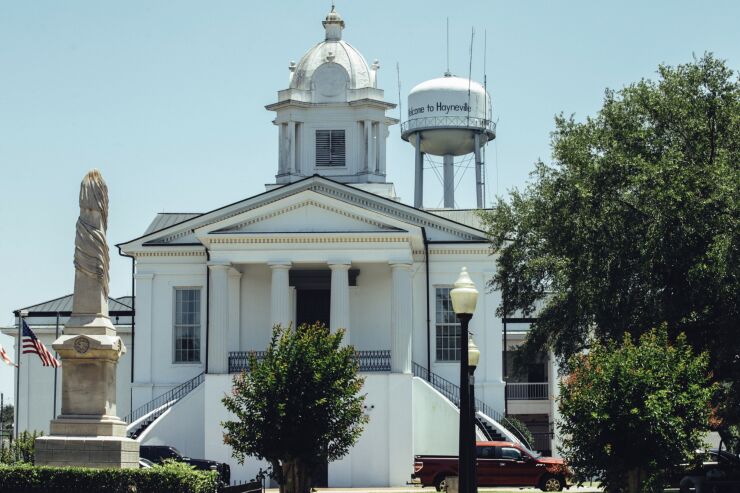The U.S. Environmental Protection Agency has launched a civil rights investigation into Alabama’s Department of Environmental Management after reviewing complaints of discrimination in the distribution of federal funds.
In a letter addressed to ADEM Director Lance Lefluer, the EPA said it would launch a probe into state policy concerning distributions from a federally backed sewage improvement fund after public advocacy groups alleged it was at the root of a mounting wastewater health crisis affecting primarily Black residents.
The original complaint, filed in the spring by the Southern Poverty Law Center on behalf of the Natural Resources Defense Council and the Center for Rural Enterprise and Environmental Justice, focused on state rules limiting who can apply for support from Alabama’s Clean Water State Revolving Fund.
Bloomberg News
The fund is meant to provide communities with low-cost financing options or grants for the improvement of water and wastewater infrastructure.
Funds come through the purchase of revenue or general obligation bonds issued by municipalities by the state, with loans typically repaid over twenty years.
The complaint alleges state rules made it “impossible” for people with onsite sanitation — i.e. septic systems — to access that money; ADEM’s regulations on the distribution of funds allow only public bodies to apply for revolving fund support, said the complaint, excluding individuals, homeowners’ associations, community groups, and nonprofit organizations that are eligible for such grants under federal law.
Residents who rely on onsite sanitation must pay out of pocket, excluding “potential recipients who would otherwise be eligible under the Clean Water Act to receive State Revolving Fund money for onsite sanitation needs at individual households.”
“Those who cannot afford a functioning onsite system are forced to resort to makeshift straight pipes that discharge raw sewage outdoors,” the complaint said. “This threatens people’s health, degrades the local environment, undermines human dignity, and causes economic harm to individuals, families, and entire communities.”
Among other evidence, the complaint pointed to a report from Columbia University that found that 90% of septic systems in Alabama’s Black Belt are functioning poorly or failing due to unsuitable soil conditions while the average cost of installing a septic system for a single household was between $10,000 and $30,000.
If true, the complaints being investigated would amount to a violation of the agency’s Title VI non-discrimination regulation, the EPA said, requiring Alabama to adjust distribution rules.
Lynne Battle, an ADEM spokesperson, told The Bond Buyer her department disagrees in full with the complaints.
“In fact, ADEM has made addressing the wastewater and drinking water needs of disadvantaged communities a priority in the awarding of funding made available,” she said.
Battle said ADEM has already awarded $463 million of wastewater and drinking water funding to counties in the “Black Belt” an area named for its fertile soil that is home to a large number of Black people, a rate three times higher than other areas based on population, and continues to address sewage projects and needs there throughout this year.
“ADEM recognizes the challenges faced by poor, disadvantaged, and minority communities due to inadequate resources, and the Department takes seriously its commitment to serving all residents of this state fairly and equitably,” she said. “We, therefore, welcome the opportunity to provide information to EPA to counter the allegations in the complaints and to answer any questions the federal agency might have concerning the funding of wastewater and drinking water projects in the state.”
Wastewater troubles are nothing new in Alabama. In 2011, a sewer warrant deal gone bad drove the state’s most populous county into bankruptcy.
Jefferson County exited bankruptcy in 2013, but appeals of the bankruptcy exit plan dragged into 2019, filed by opponents who said the exit financing unfairly burdened sewer ratepayers.
